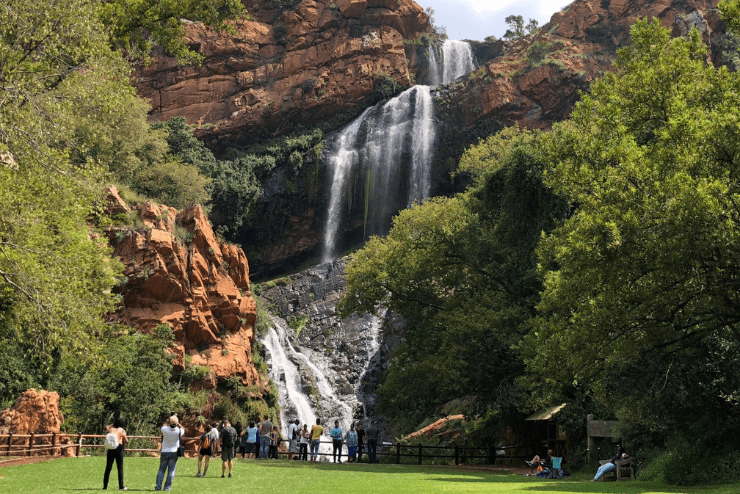What Does Johannesburg North Attractions Do?
What Does Johannesburg North Attractions Do?
Blog Article
Not known Facts About Johannesburg North Attractions
Table of ContentsJohannesburg North Attractions for BeginnersSome Known Factual Statements About Johannesburg North Attractions Johannesburg North Attractions Can Be Fun For EveryoneIndicators on Johannesburg North Attractions You Need To KnowFacts About Johannesburg North Attractions UncoveredJohannesburg North Attractions - The Facts
The city owes its place to the presence of a much more priceless resource: gold. The city grew on the side of the Witwatersrand Main Coral reef, a below ground stratum of gold-bearing quartz-silica corporation that arcs for hundreds of miles under the Highveld. The majority of the gold mines in the city ceased procedure in the 1970s, however in its day the Witwatersrand gold industry made up greater than 40 percent of the globe's annual gold manufacturing.Johannesburg has a pleasant environment. Summer temperatures average about 75 F (24 C); winter temperatures average concerning 55 F (13 C) and only occasionally dip listed below cold. The city takes pleasure in about 8 hours of sunlight daily in both winter and summer. Rain averages about 28 inches (700 millimetres) per year, however the complete varies substantially from year to year.
What rainfall the city obtains drops almost exclusively in the summertime months, commonly in spectacular late-afternoon electrical tornados., where many residents still rely on coal for fuel.

Examine This Report about Johannesburg North Attractions
The balance of the city is occupied by whites. Lodging differs in character and top quality.
Physical growth, although rather limited by transportation, proceeded quickly as immigration to South Africa, and Johannesburg specifically, boosted dramatically. This problem was resolved in the 1930s when the car was presented in mass manufacturing to South Africa. Vehicles were, generally, restricted to the rich, and permitted them to relocate to the north of the city and commute into the centre.
The majority of inadequate suburban areas were mixed, with inadequate blacks and whites cohabiting, although the rich residential areas were generally scheduled for whites. This changed with the political election of the National Celebration in the 1948 political elections, that began to formalise the system recognized as apartheid. Racism formally marked which suburban areas each race could reside in under the Group Locations Act.
The previous system of eleven numbered areas was reorganised in 2006. Marshalltown, as seen from the top of the Carlton Centre. The M1 and M2 run behind the buildings, and the southern residential areas prolong past the freeway boundary. The inner city of Johannesburg is located within the city's view it Area F. The estimated moved here population of the area is 200,000, [] The number of individuals living in the inner city on an informal basis is unidentified, as several are illegal immigrants. A lot of higher-income residents and white people have relocated to the north suburbs and have been replaced by lower-income black individuals. The joblessness, education and learning, and age profiles of the area are all unknown, because of the trouble of obtaining reputable details concerning the area.
Johannesburg North Attractions for Dummies
Centred on the CBD, the area includes the suburbs of Yeoville, Bellevue, Troyeville, Jeppestown, and Berea to the eastern. To the west it spreads out to Pageview (Johannesburg North attractions) and Fordsburg. There are little industrial locations to the south, such as City West-Denver and Benrose. Around 800,000 travelers travel through the central city every day, and it operates as a regional shopping node for site visitors from the southern residential areas. Yeoville and Bellevue have a mix of apartment buildings and solitary household devices on tiny whole lots. The region is located on a hilly divide that runs from eastern to west. One of official site the most conspicuous geographical function is Observatory Ridge, which is called for the large observatory situated on it. The leisure spaces are no more utilized, as a result of protection issues.

Johannesburg Stadium, a training ground for both the Golden Lions and Orlando Pirates, is adjacent. The eastern suburbs of Johannesburg lie in the city's 7th [] and 9th [] regions. The area is also functionally integrated with East Rand boundary communities beyond the main limit of Johannesburg, such as Bedfordview and Edenvale (both part of Ekurhuleni Metropolitan Town).
The Best Strategy To Use For Johannesburg North Attractions
The eastern suburbs are some of the oldest locations of Johannesburg, there are big neighborhoods of Jewish and various other European histories, the majority of the populace is English speaking. There are three golf training courses as well as a number of protected ridges with viewsites.
Originally constructed to house male migrant employees, many have been improved as homes for pairs and families. The suburb was not historically allowed to develop employment centres within the area, so practically all of its citizens are travelers to other parts of the city.
4 Simple Techniques For Johannesburg North Attractions
The domestic locations in the northern suburban areas are mainly official, with no significant areas of casual housing, or housing that does not have a permanent framework. This is an established area, there is a fad of land use modification from household to industrial, particularly along major arterial roads and around well established nodes.
Roadways to the eastern and west are much less well created, as there are no highways taking a trip in that direction. In the direction of the north boundary of the city, the thickness of development decreases, leaving large areas of primitive land around Midrand.
Not known Facts About Johannesburg North Attractions
The first suburb to the north of the central city is Parktown, which is located on a hillside forgeting the central city and Hillbrow. It has many wealthy residents and Edwardian-style mansions, in addition to the Education and learning and Medical campuses of the University of the Witwatersrand. The huge concrete Charlotte Maxeke Johannesburg Academic Health Center controls the horizon of Parktown.
Report this page